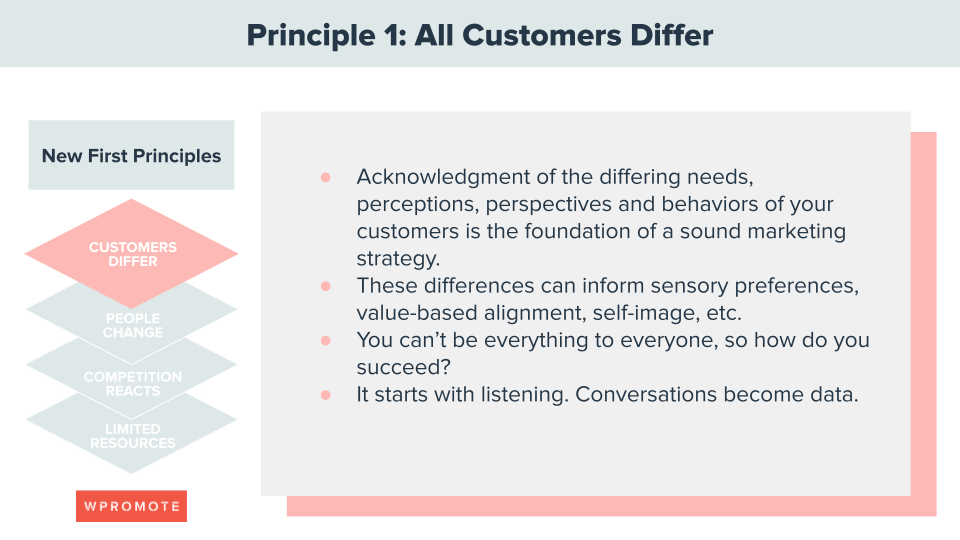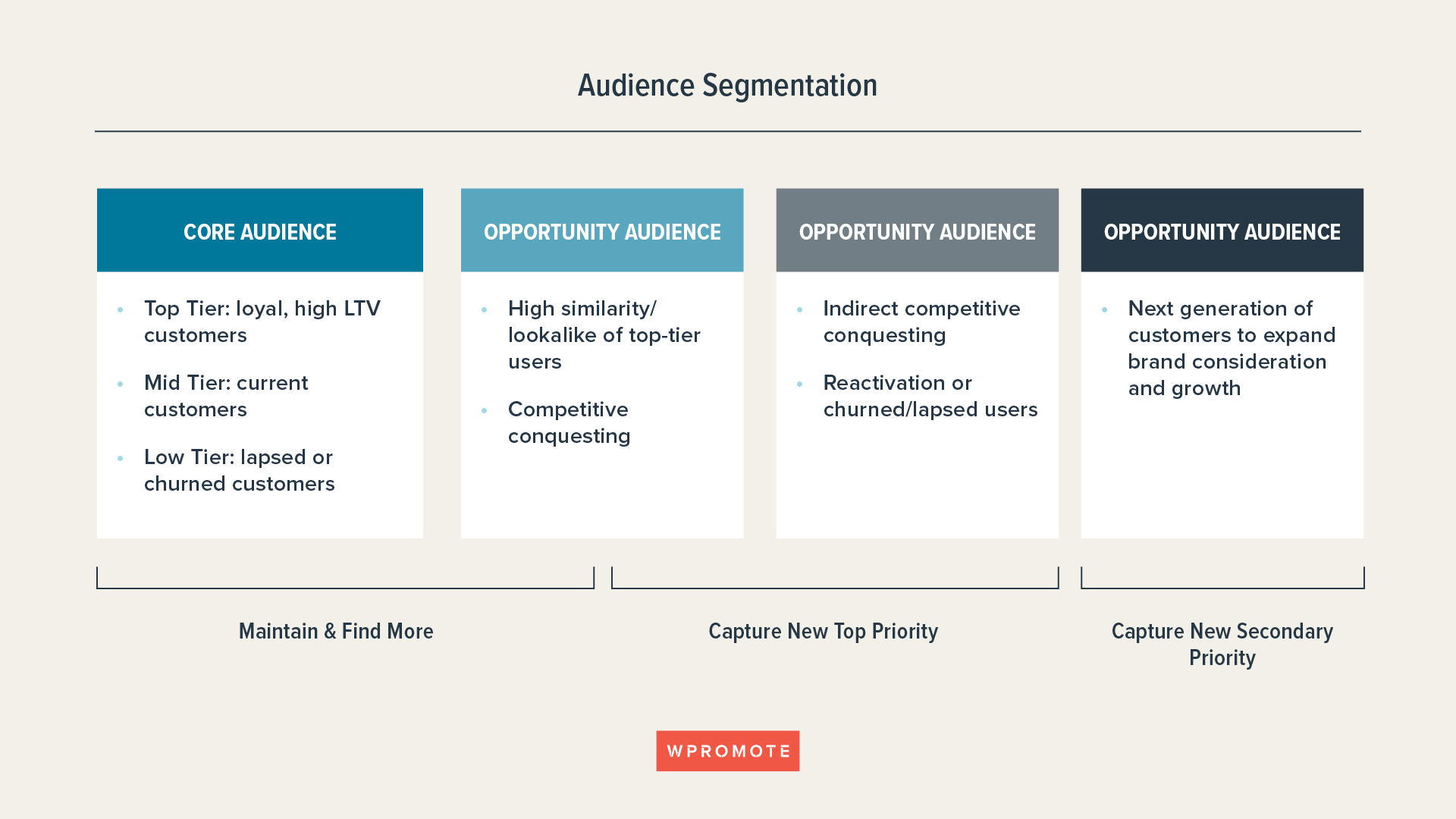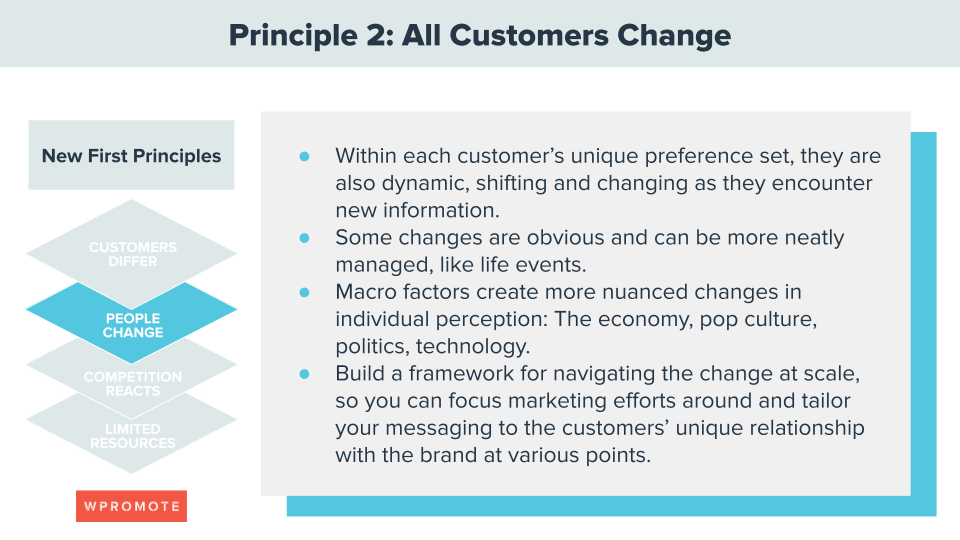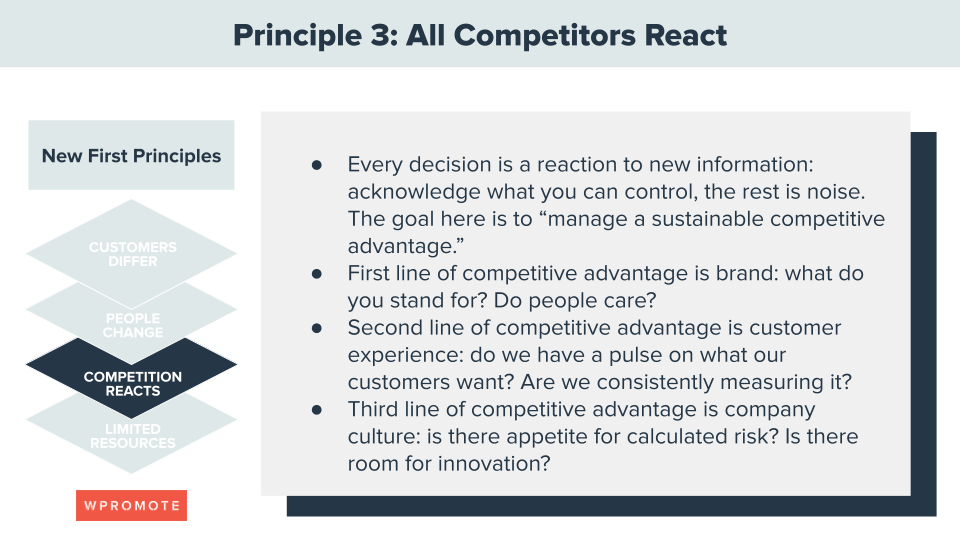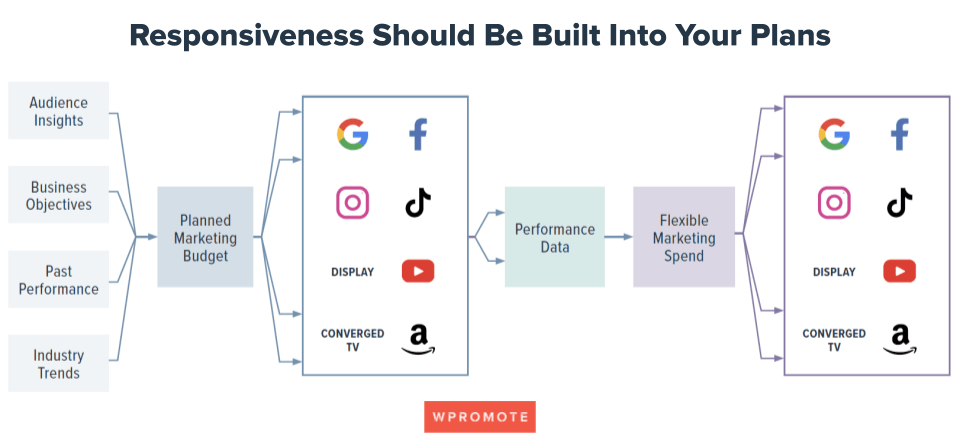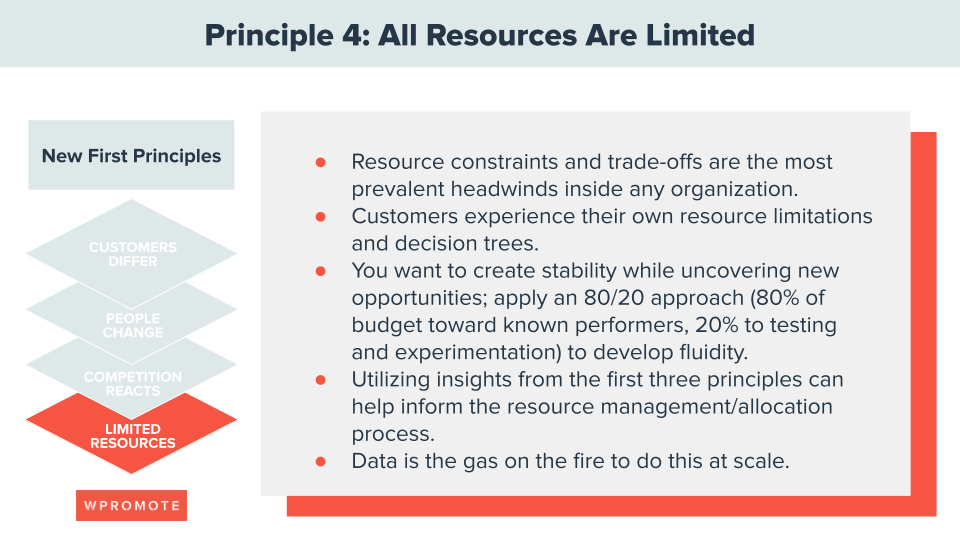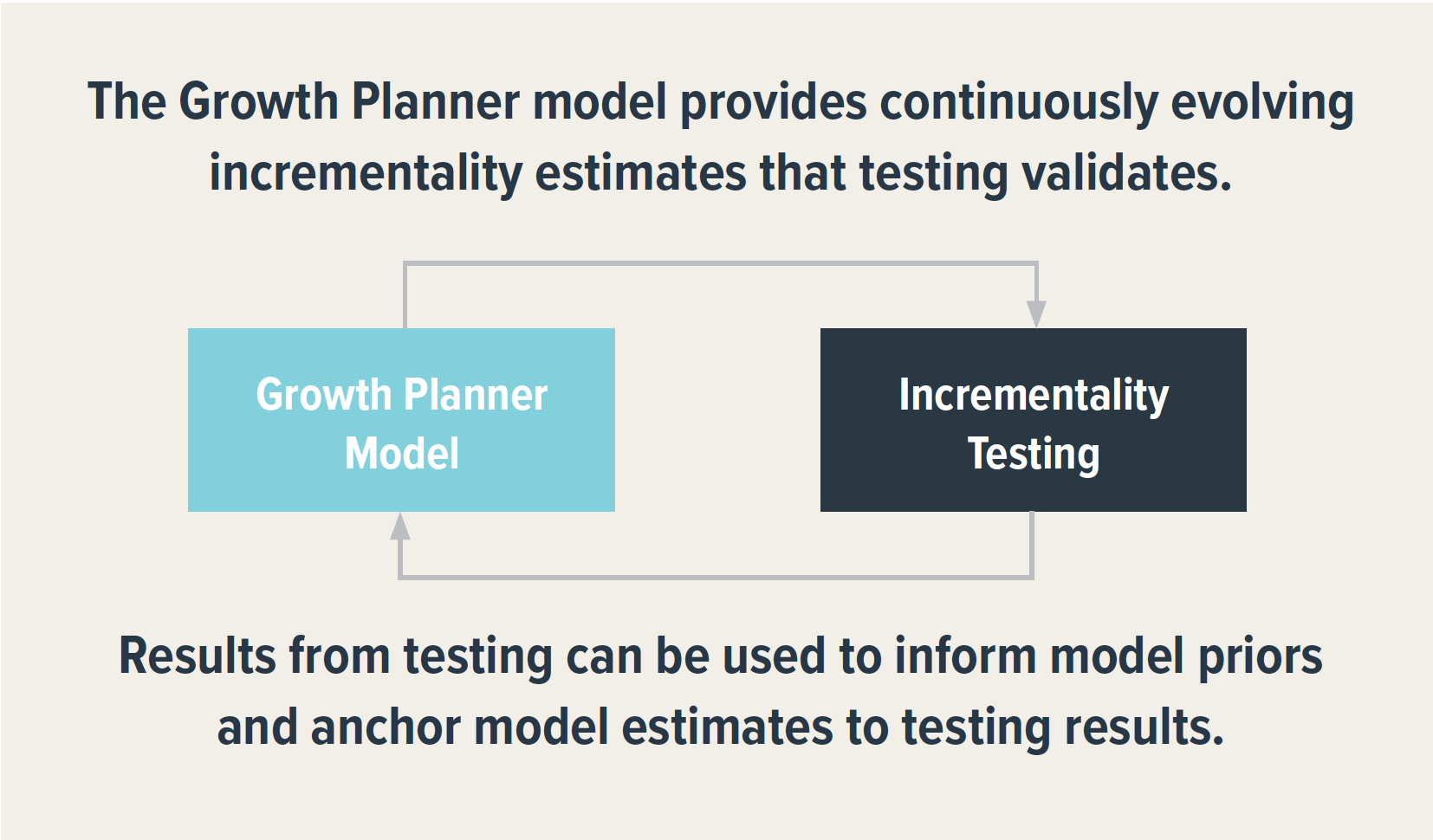If you are a marketing professional, there’s a good chance that you’ve been taught that the four P’s (price, product, promotion, and place) should form the basis of any marketing campaign. But that mindset isn’t built for a digital world and the changing expectations of consumers. That’s why, if you walk into a marketing classroom today, you’ll find there is a new set of first principles of marketing built for this new era, formulated as four essential truths:
- All customers differ
- All customers change
- All competitors react
- All resources are limited
In a digital-first world, things move a lot faster, and it’s not enough to just sell a product by listing all of its features or offering the most competitive price. You need to consider factors like consumer behavior, personalization, a wide variety of channels, and an ever-growing field of competition. In other words, you need a potent combination of data and strategy to light the way. 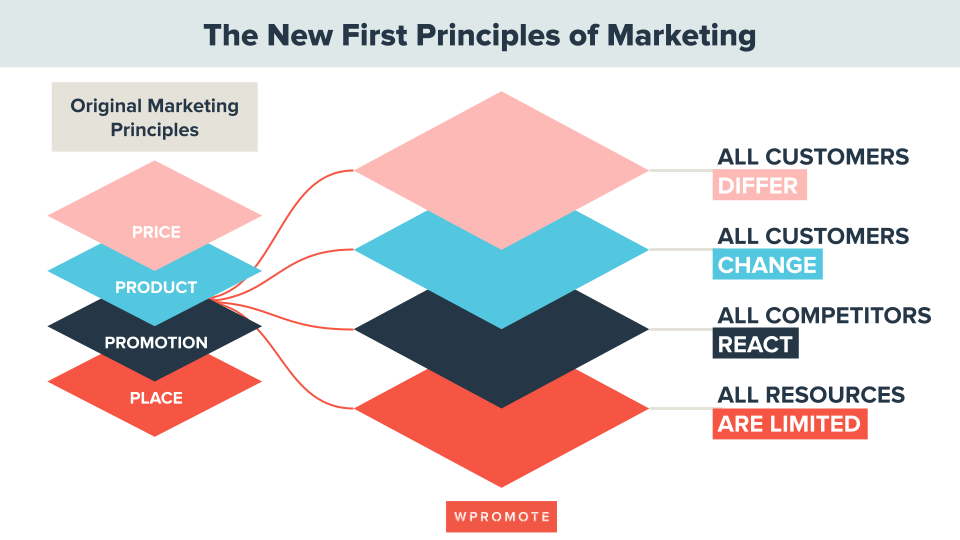
All customers differ: the critical need for smart audience segmentation
Your audience should be at the center of your media planning: you need to understand how they’re consuming media, what they expect from brands, and what drives them to consider a brand in different media environments. All of these differing needs, perceptions, perspectives, and behaviors need to become points of data that form the foundation of your marketing strategy, including media mix and budgeting decisions. That’s where customer segmentation comes into play.
What is a customer segmentation strategy?
Customer segmentation, also called audience segmentation, is one of the cornerstone tools of digital marketing. Segmentation means dividing your audience into different buckets based on demographics, purchasing behavior, or other factors that let you target and tailor your message more effectively. Segments can be anything from women over 35 to people who bought a specific product recently. They can be broad, narrow, or in between, and they can select only one trait or a combination of several.
How to create tailored marketing campaigns through customer segmentation
To effectively segment your audience, you’ll need to bring together various kinds of consumer intelligence to glean insights and inform marketing decisions, then translate that intelligence into activation in your marketing channels. A simplified version of the process goes like this:
- Gather and organize data. Look to leverage privacy-compliant technology like a CDP to create a structure that accounts for all stages of the consumer lifestyle: consumer → customer → retention → evangelist → churned. That will help you get a really strong pulse on what these buckets are and how many people exist in them at any given time. The goal is to better understand what the broader market looks like and how your brand can transform consumers into customers, then maximize LTV for your most valuable segments.
- Create customer cohorts. Next, you’ll combine your first-party behavioral data with insights into larger consumer trends to identify and prioritize key groups of customers, creating meaningful cohorts based on your core audience and opportunity audiences you can optimize against. Separate your core audience from new opportunity audiences, then prioritize your efforts based on LTV. Build out specific audience segments that include at least 5,000-10,000 people. Think of the sweet spot for your cohorts as somewhere between 25,000-200,000 people; more than that indicates you should segment further.
- Personalize your message. Segments that have reached the 5,000-10,000 person minimum should be piped into your paid media channels. You can then start serving them ads about your brand based on the information you’ve gathered, using creative and messaging that speak directly to their needs. Make sure you’ve applied proper data taxonomy and appropriate tagging to your new audience segments so you can accurately measure performance and continue to gather fresh insights into their specific behavior to inform your strategy.
All customers change: agility is a make-or-break part of your marketing strategy
People’s relationship with a brand isn’t static; your customers will have different needs as they transition from learning about your brand to first-time buyers to loyal customers. Customer preferences are also dynamic, shifting as new styles, economic factors, personal tastes, life events, and more continue to change.
How to create an agile marketing strategy
The key to unlocking agility is information. Internally, you should pay close attention to shifts in the news and industry trends, as well as any shifts in purchase behavior specific to your business, and prepare to re-prioritize in response. To get that information, you need a single source of truth where you can combine first-party data points about your customers’ patterns of behavior and how they’re changing with consumer and industry insights. Then you can pull those learnings into audience segments to get more information about what specific groups need and how your brand can deliver solutions across an integrated media mix. 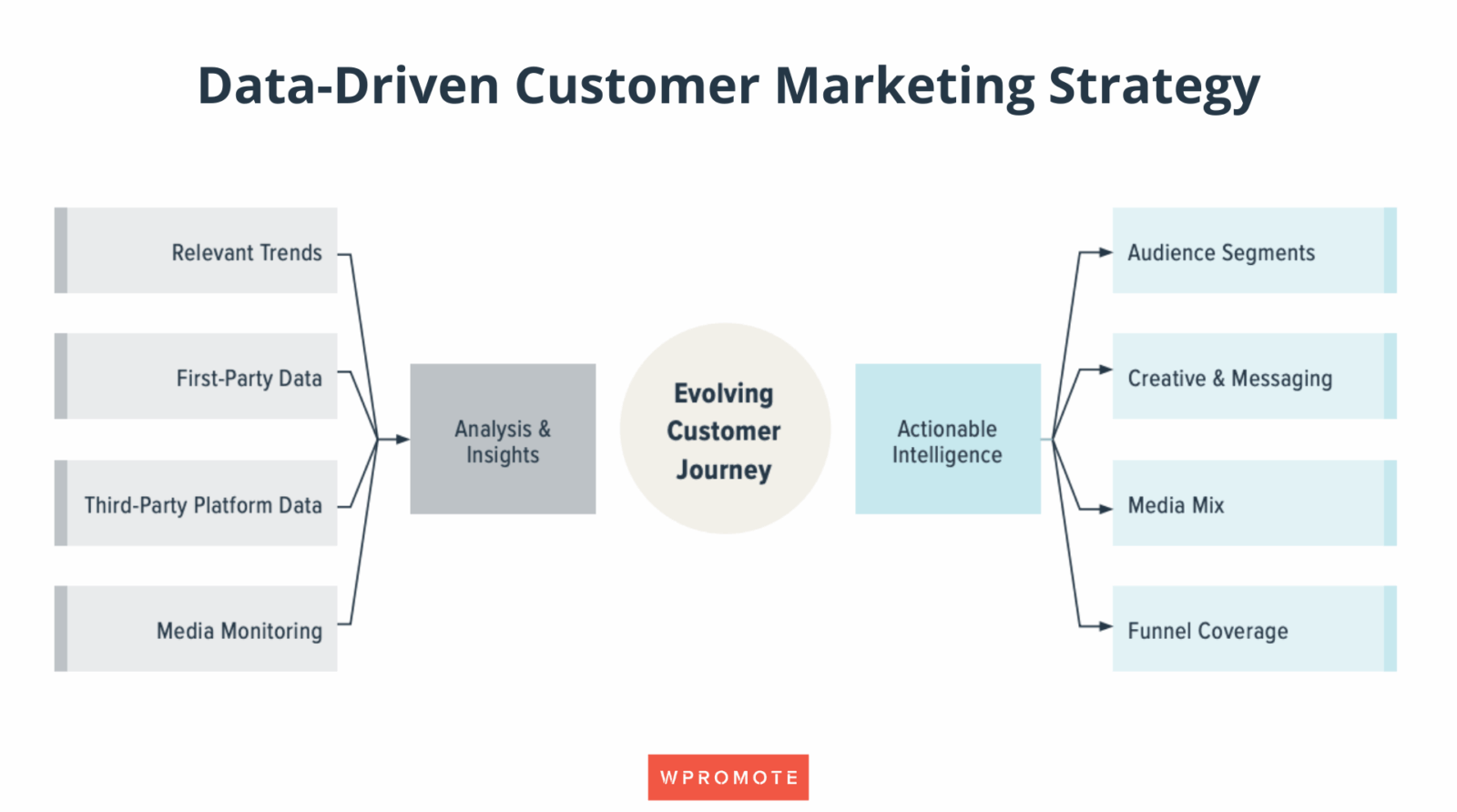
Why customer lifetime value (CLV) matters in an agile strategy
Customer lifetime value (CLV) is the average amount of revenue that your brand can expect to earn from a customer for as long as you have their business. In an agile strategy, where change is a constant and segments aren’t static, CLV gives you a tool to understand how well your brand is meeting the needs of its customers. An agile brand can increase CLV by continuing to serve its customers’ needs as conditions change. That might mean introducing new offerings for customers transitioning to a new stage of life, or creating options like loyalty programs and discounts to help customers save in tight economic conditions. Brands that don’t master agile strategies will see a lower CLV as customers continue to churn, meaning they’ll often work harder to attract new customers rather than keeping existing ones.
All competitors react: responsiveness is key, but don’t lose what makes your brand distinct
As consumers and market conditions change, competitors will react, sometimes in surprising ways. Agility isn’t just about adjusting messaging, it’s about how quickly your marketing can respond to what’s happening in real time. But you have to make sure you don’t throw the baby out with the bathwater in the name of agility; you need to understand what makes your brand different and what about your positioning speaks to your customers, and take that into account, even through chaotic periods of change.
How to adapt your marketing strategy for changing consumer behavior
When it comes to reacting to new competitors who might be capturing market share, don’t panic. Ground your thinking in three critical components of your competitive advantage when deciding how to react to market changes:
- Your brand: What do you stand for?
- The customer experience: Are you aligning the product or service experience with what you know about people’s preferences and behavior?
- Your company culture: Are you cultivating an appetite for calculated risk and innovation?
You should, of course, keep an eye on the competition, but first and foremost, you need to set your own course that builds agility into your strategy. That doesn’t mean just doing what you’ve always done. It does mean choosing when to react and having the technology and expertise in place to help you choose the best course for your brand, your business outcomes, and your customers.
Balancing brand uniqueness with responsiveness to market changes
Be careful of making decisions that lose what’s distinct about your own offering. Look no further than Instagram’s response to the rise of TikTok: the video app started taking audiences away from other social media platforms like Instagram, so Instagram launched Reels, which was criticized for aping TikTok’s features. In fact, other changes Meta announced that would make Instagram even more similar to TikTok have been postponed after widespread outcry to “Keep Instagram Instagram.” And despite all of Meta’s efforts, TikTok users are still spending more time on TikTok than Instagram. To avoid the trap of overcorrecting, you need a deep understanding of what actually draws customers to your brand. What’s your value proposition, and how can you update it as conditions change without getting lost chasing your competition? That’s how we come to the fourth fundamental: connecting your marketing to the actual outcomes you want.
All resources are limited: your marketing efforts need to align with business outcomes
Organizations of every size experience resource limitations, which means even brands that dominate their categories need to learn how to outsmart, not just outspend, the competition. Measuring marketing performance isn’t enough, especially if your goal is to achieve profitability. You can’t be everywhere, so you need to understand how marketing investments impact business outcomes to get the most out of limited budgets.
How to create a marketing strategy that aligns with business goals
Start by identifying exactly what your goals are, including short-term objectives like quarterly targets and long-term ones like capturing market share. From there, be sure you understand which business priorities will get you across the finish line, whether that’s reducing cost-per-click or increasing conversions on a certain item. Finally, think about which resources have the most direct effect on your business goals.
Measuring marketing incrementality and optimizing media mix modeling
There are two critical tools for aligning your spending and business goals: media mix modeling and incrementality testing. Both serve to provide a better understanding of how marketing really impacts the core objectives of your business, beyond vanity metrics or platform-specific performance.
What is media mix modeling?
To really understand the value of your marketing investment to the business as a whole, you need to be able to see the performance data across all of your media efforts in a holistic view. After all, the customer doesn’t see channels, and channel performance alone isn’t the endgame; it’s overall business growth. A functional media mix model provides a clear picture of how each platform and each initiative within those platforms impacts the overall business, so you can understand where users are engaging as part of that journey, where you are over-indexing, and where you are under-indexing. 
What is incrementality testing?
Incrementality refers to the actual impact of your marketing campaigns, i.e., solving for how many conversions occur because of your ads by removing the conversions that would have happened anyway. Think about it like this: if someone is served an ad on Google and makes a purchase, Google will attribute the sale to your ad. But what if that person was already going to buy? You’re not getting a totally accurate view of the impact your ads are having without removing those conversions. Instead, you want to test if seeing your ad was actually likely to change someone’s behavior. Once you have incrementality testing in place, you can optimize and refine your paid media strategy, using the results to adjust your media mix and future marketing efforts. Further incrementality testing feeds more data into the model, which constantly iterates the algorithm to improve its accuracy. To make the most of your budget, you need strategies that speak to your customers, change with the times, and stay ahead of the competition. You also need to be able to incorporate new technology and innovation into your efforts, especially when it comes to evaluating whether or not your campaigns are working to help you achieve your business outcomes. That’s what these four principles can help you keep front of mind.


